Table of Contents
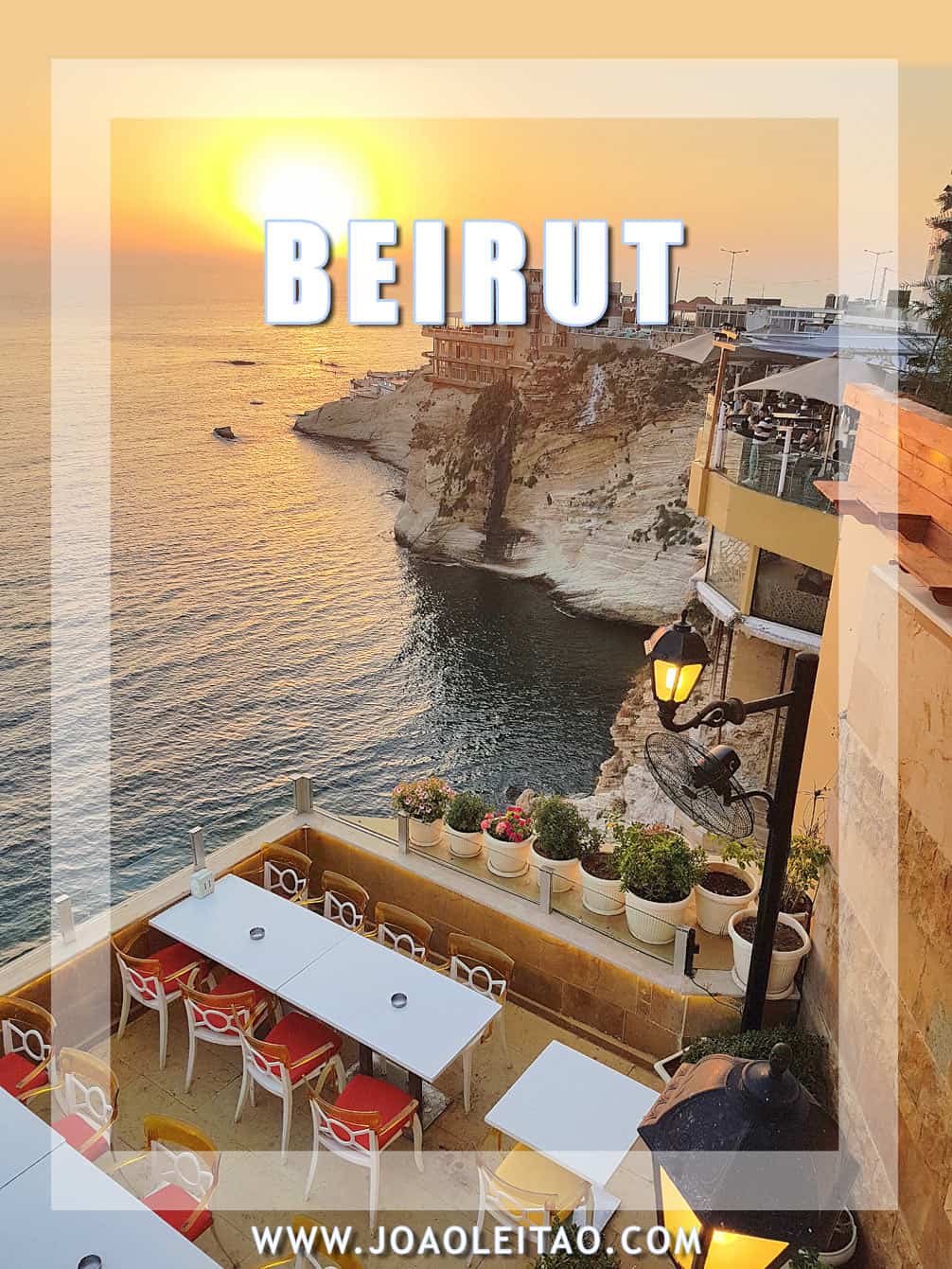
Beirut is the capital of Lebanon, and most likely the only entryway into the country for a foreign traveler. In addition to its attractions, it’s also an excellent base to visit other historical and natural sites in the region such as Byblos or Baalbek.
You can’t visit Lebanon without spending some time in Beirut. If you don’t include this city in your itinerary, you’ll be missing out on a must-visit destination. On this page, I share with you a practical city guide with the best places to visit in Beirut.
Beirut is one of the oldest cities in the world, occupied practically back to back by different people including the Phoenicians, the Assyrians, the Greeks, the Romans, the Arabs, the Ottomans, and the French.
When Lebanon became independent in 1943, Beirut slowly grew into one of the most important financial hubs in the region and the capital city of the country that, in the early 1970s, was called the Switzerland of the Middle East. The Civil War broke out in 1975, and the most violent fights happened in Beirut.
The ceasefire and the end of war happened in 1991 and the damage the city endured for such a long time gave way to a remarkable work of reconstruction.
Nowadays, despite the tension in this region, Beirut is a capital worth visiting, safe and fascinating, with vibrant cultural life and lots to see. You can visit great museums and old ruins, or spend hours exploring the historic center.
Quick travel tips to visit Beirut:
- Wake up early to be the first in monuments, museums, and other landmarks;
- Take a free walking tour;
- The sunset by the famous Pigeon Rocks is gorgeous;
- Although it’s a tourist cliché, take a stroll on the Corniche (promenade) in Raouché;
- To find out when to go to Beirut, you must get acquainted with the seasons and local climate. The best time to go to Beirut is between April and October when the weather is perfect for traveling in Lebanon;
- There is so much to see in Beirut in Lebanon that you have to organize your trip properly and optimize your itinerary to spend the most time possible on each site. That way you’ll have truly memorable vacation time;
- During your stay in Lebanon, you can actually always stay in Beirut and make day trips to other places around the country such as Anjar, Byblos, Baalbek, and Tyre.
Beirut Top 5
Pigeon Rocks
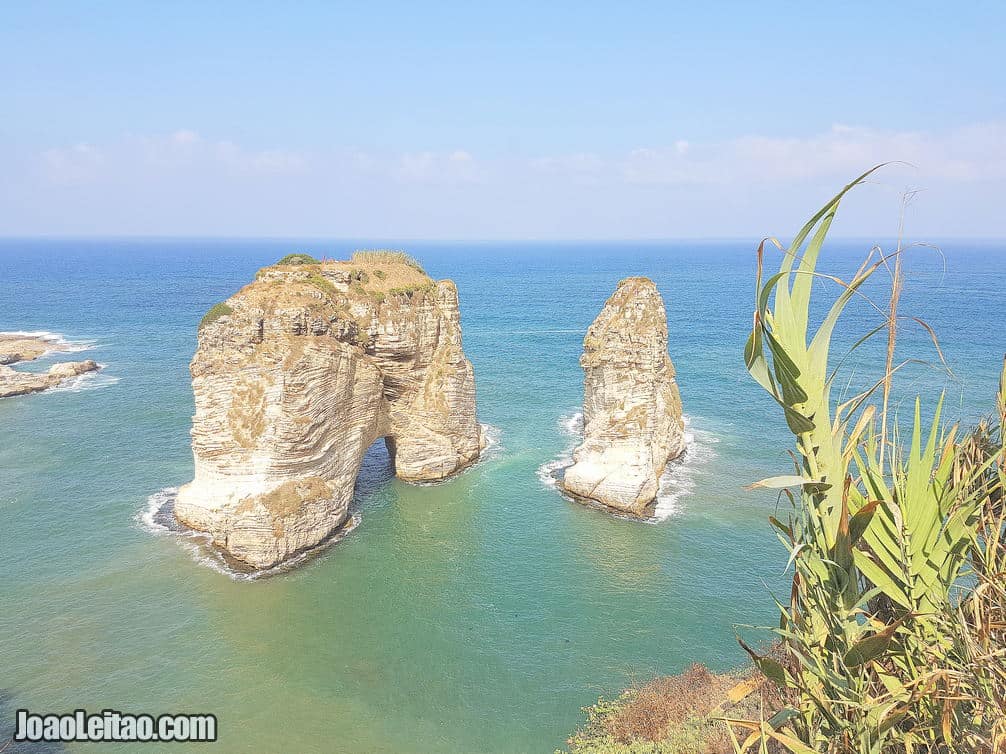
Mohammad Al-Amin Mosque
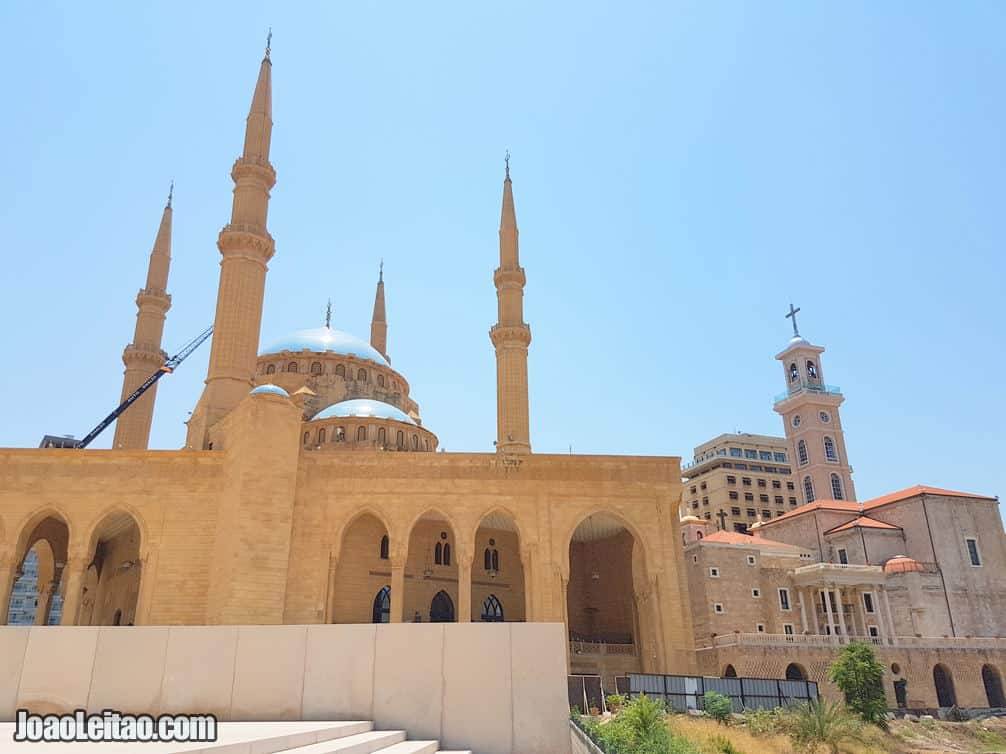
Nijmeh Square
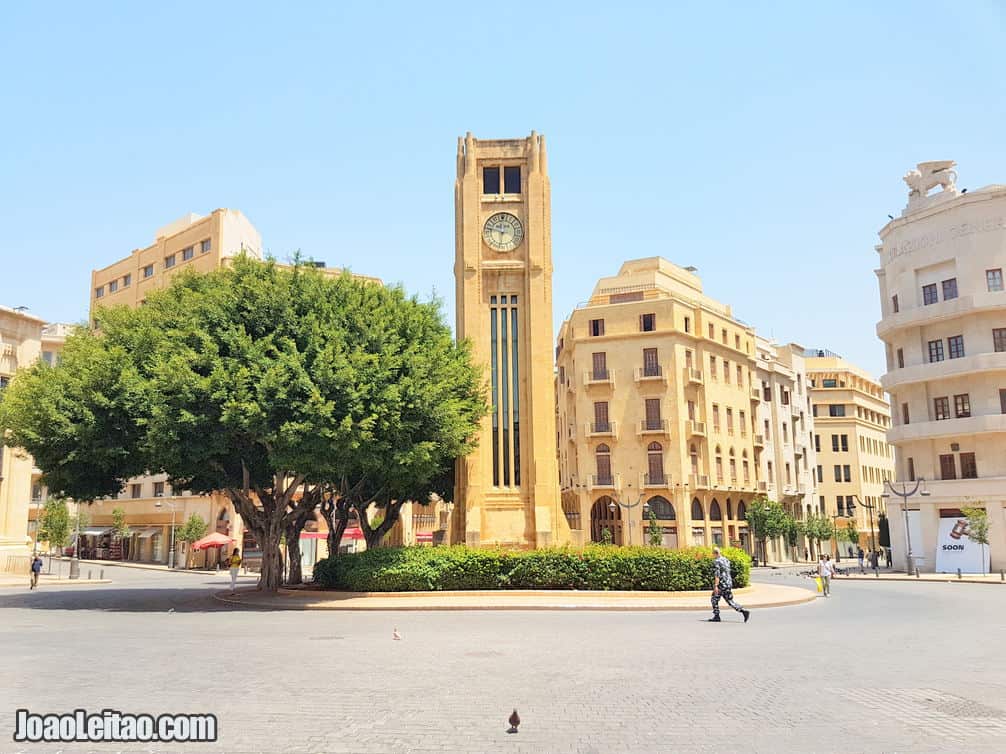
Saint George Cathedral
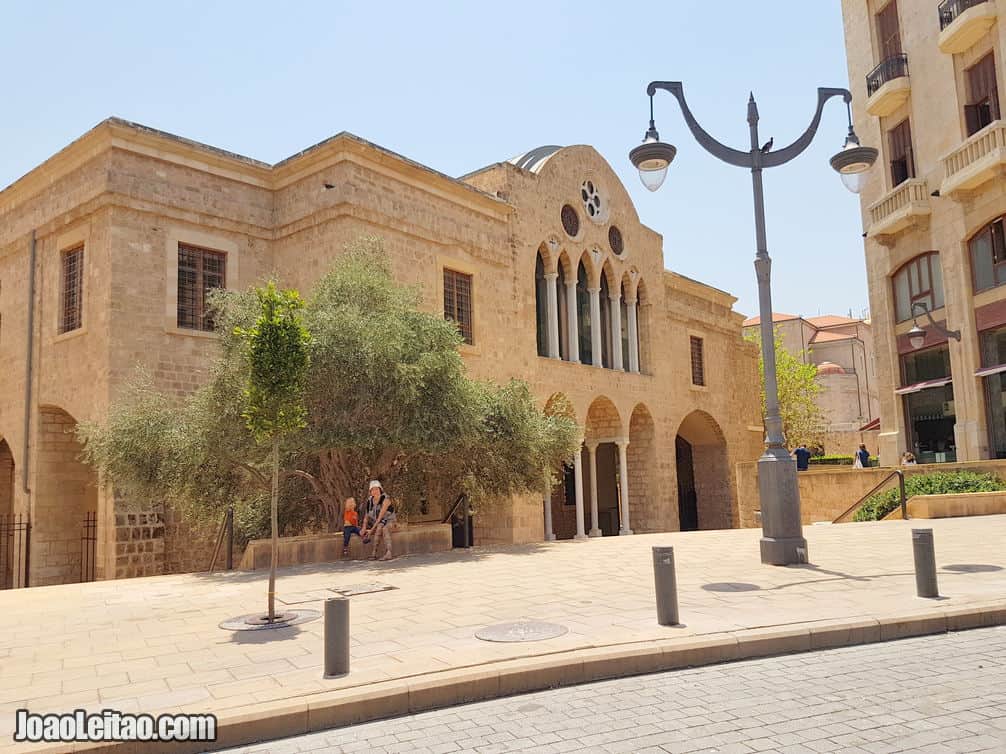
Roman Forum
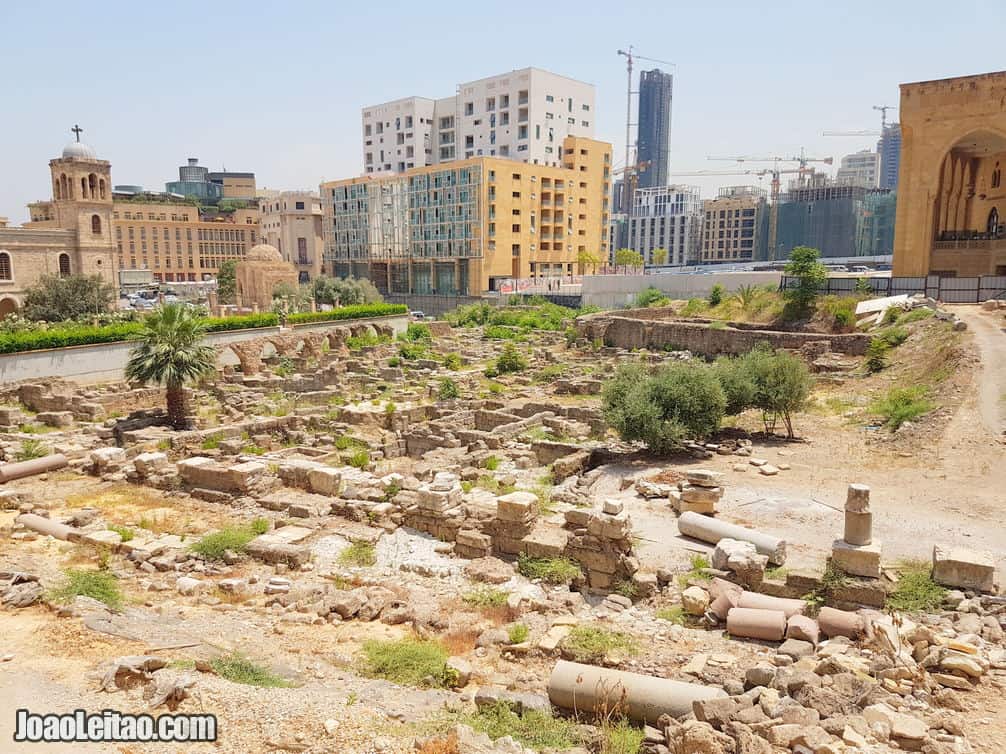
What to visit in Beirut
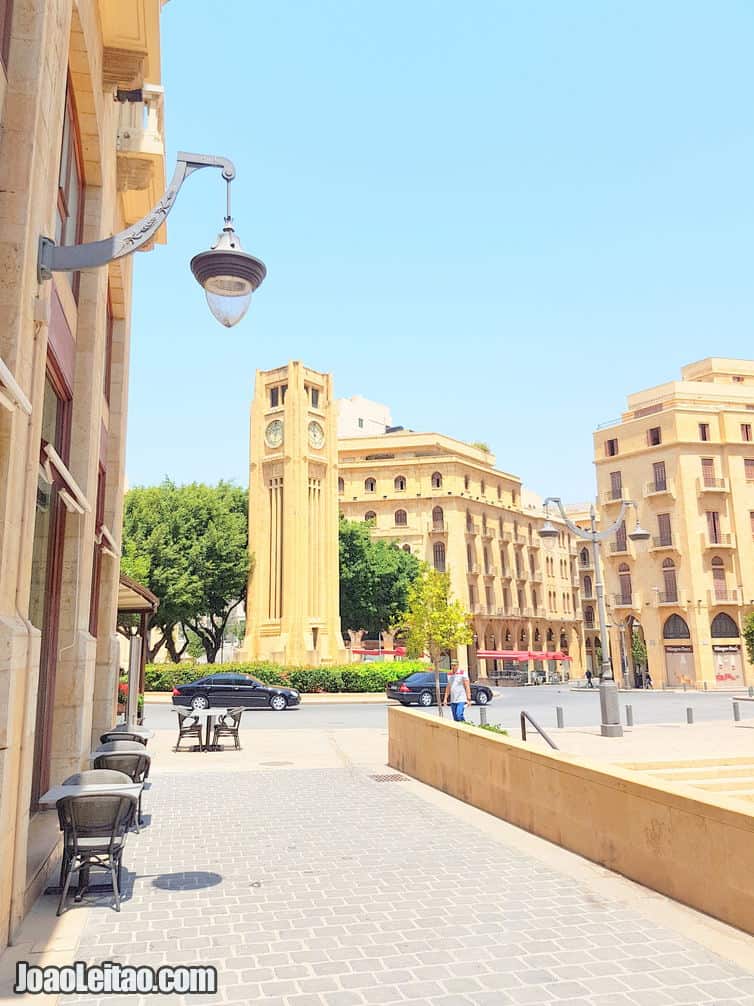
Most famous sites
- Pigeon Rocks
- National Museum of Beirut
- St. George Crypt Museum
- Mohammed Al Amin Mosque
- Sursock Museum
- MIM Museum
- René Moawad Garden
- Roman Baths
- Robert Mouawad Private Museum
- The Maronite Cathedral of St. George
- Al-Omari Grand Mosque
- Synagogue Mahgen Abraham
- Corniche (Promenade)
- American University of Beirut
- Martyrs’ Square
- Gemmayzeh Street
- Lebanon Bank Museum
- Souks of Beirut
- Hamra Street
- Place de l’Etoile
Map of Attractions
Tours in Beirut
Beirut City Guide
Mohammed Al Amin Mosque
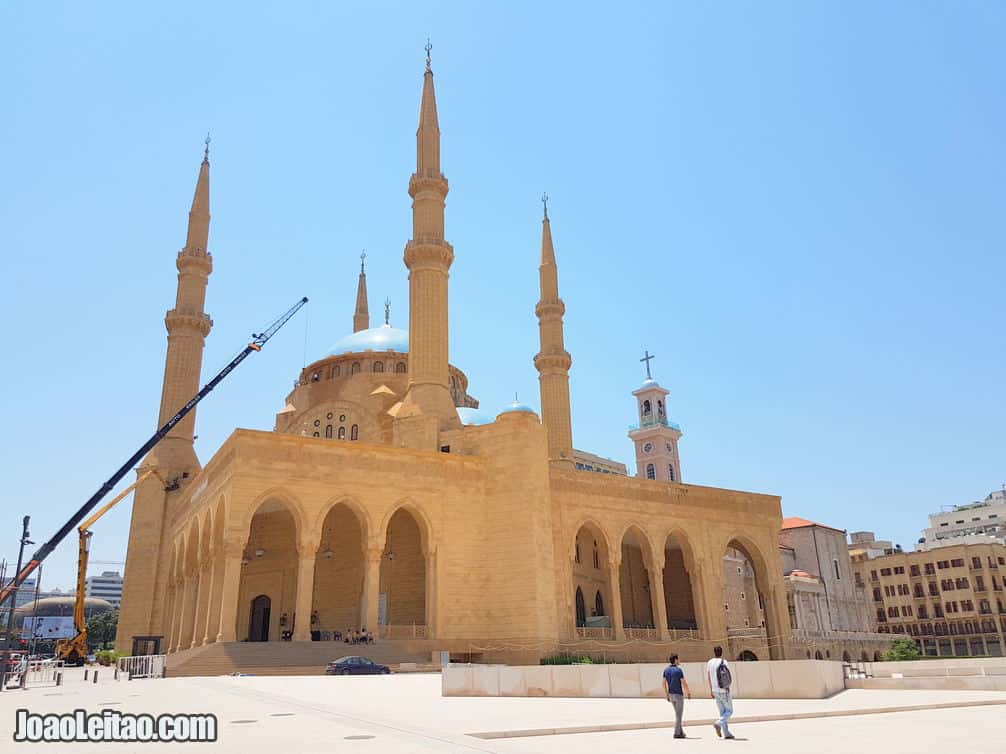
This mosque, also known as Blue Mosque, is in the historic center of Beirut. It was built recently, in 2008, on a site where there was only a simple place of prayer. The dream of the local community to build a mosque there began in the 1950s when they founded an association to carry on the plan. The Mohammad Al-Amin Association couldn’t buy the land they needed, and the Lebanese Civil War (1975-1991) put their plans on hold. The mosque began construction in 2002 with a donation from then Prime-Minister Rafik Hariri. It’s near the Martyrs’ Square and it’s quite an impressive building in amber-colored stone, with four 65-meter tall minarets, and spacious enough to accommodate 3,700 followers, and possibly just as many in the side hall for the women.
Roman Baths
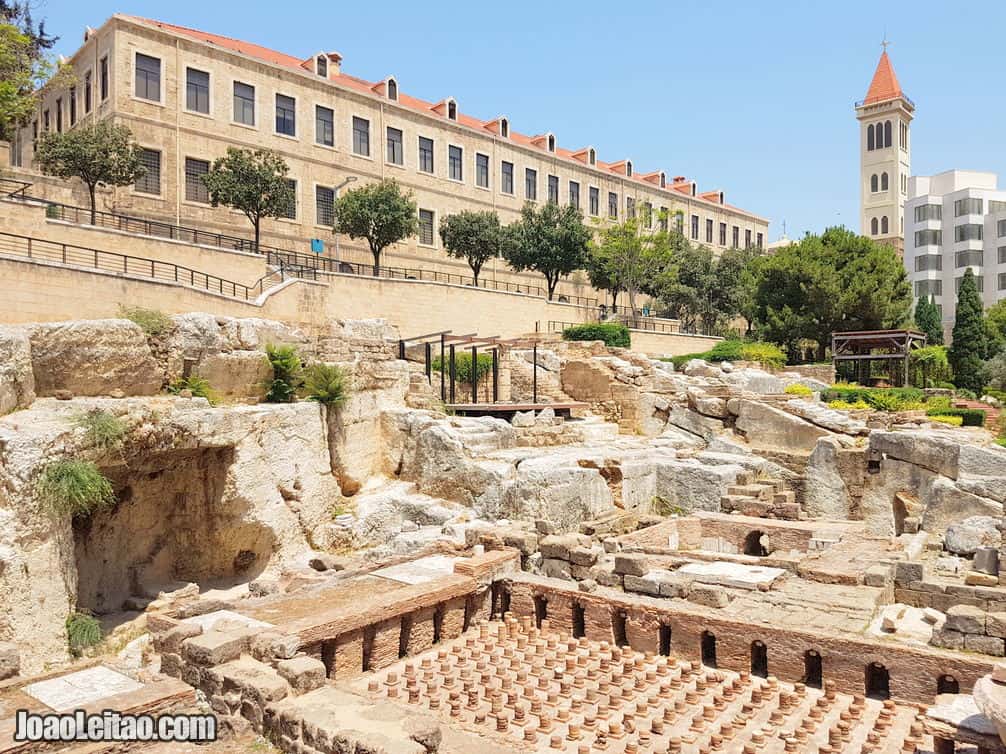
The ruins of the Roman Baths are in the historic center of Beirut surrounded by the modern Lebanese government buildings. They were discovered in 1968 and went under preservation works after the end of the Lebanese Civil War. Today, it’s used as a venue for some artistic performances and events. The Roman city of Berytus had four bath complexes, sophisticatedly equipped with systems for cold and hot baths. Nowadays, it also includes a Mediterranean garden with medicinal plants that Romans used in the bath water.
The Maronite Cathedral of St. George
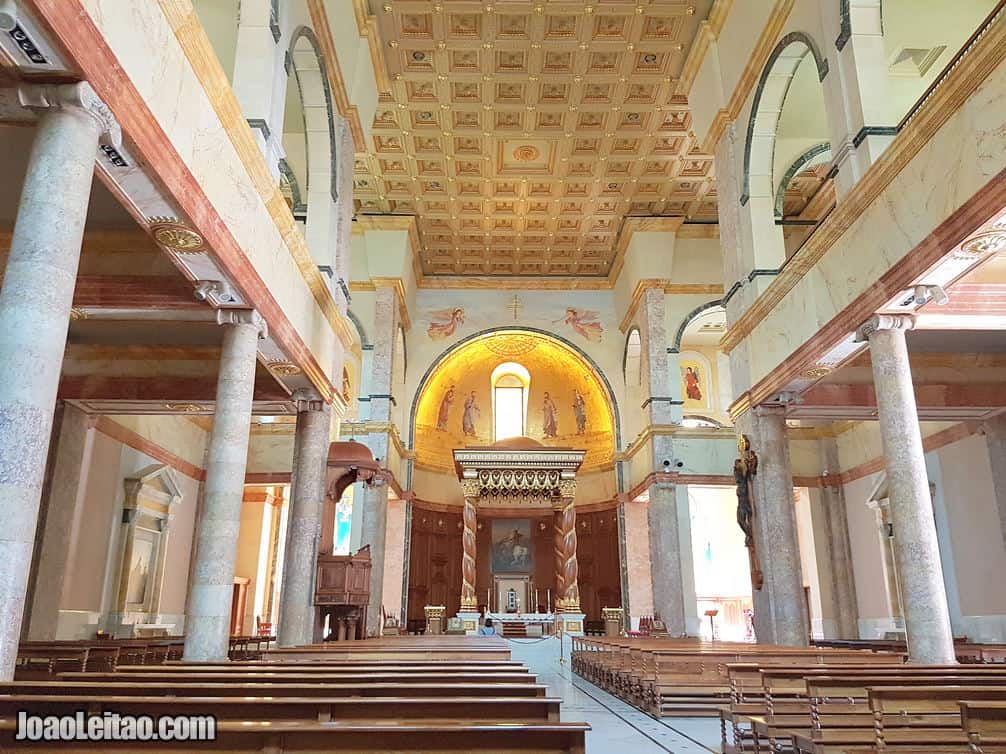
This Neo-Classical cathedral in the historic center of Beirut was built between 1884 and 1894, inspired by the Basilica di Santa Maria Maggiore in Rome. Monsignor Joseph Debs, the Archbishop of Beirut, was the man behind the plan to build it in a location where there had previously been a church dedicated to the same saint in 1755. Engineer Antoun Tabet led the renovation works in 1954. It was severely damaged during the Lebanese Civil War (1975-1991) and restored again in 1997. The new bell tower that took ten years to be completed was inaugurated in 2016. The original bell tower was 76 meters high, like the one in Basilica di Santa Maria Maggiore, but the new structure is 72 meters tall, the same height as the minarets of the Mohammed Al Amin mosque to convey the sentiment of inter-religious unity. There is a small museum you can visit in the crypt.
Martyrs’ Square
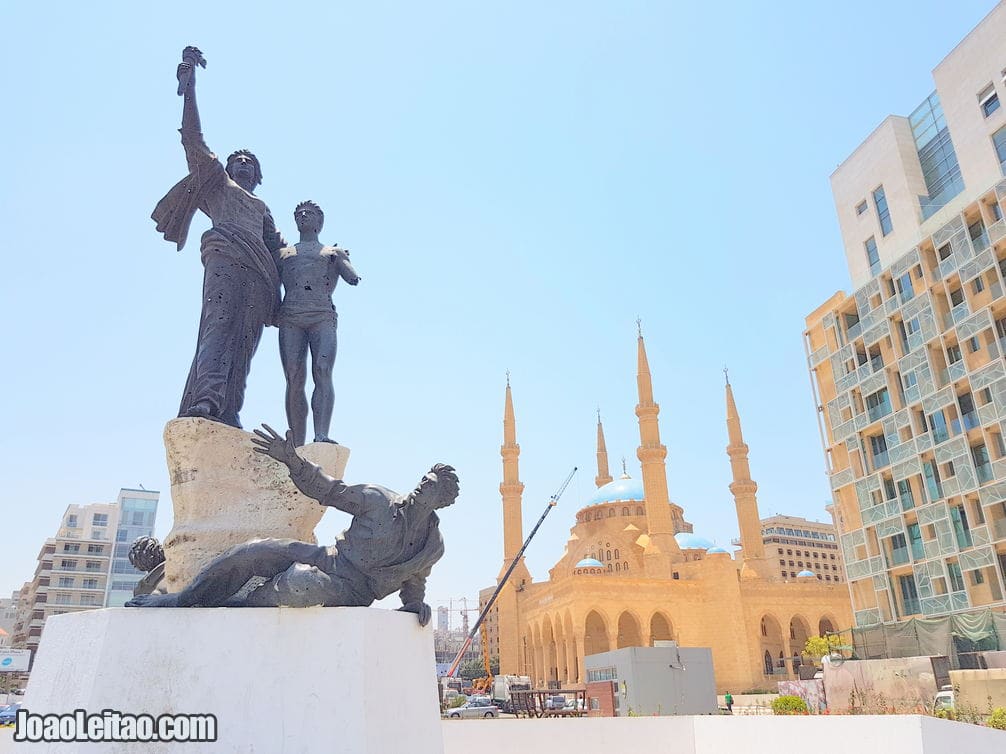
This spacious public area was named Martyrs’ Square in 1931 as a tribute to the Lebanese independentists who were executed by the Ottomans, although it’s existed in different sizes and shapes since at least the 18th century. In the 1950s, when Lebanon and Beirut were at their prime, the square was full of cafes and cultural spaces becoming the city’s gathering place. Unfortunately, during the Civil War, it was right in the middle of the opposing sides and was severely damaged. The square was only recovered in 2005 after a public call to revitalize the space.
René Moawad Garden
These gardens are one of the oldest public spaces of this kind in Beirut. They were created in the Ottoman period, in 1907, by orders of Khalil Pasha, an Ottoman military officer. Since then, the gardens have changed names several times. First, it was called Hamidi Public Garden, although people called it Sanayeh Garden because it’s located in this neighborhood. The current name is a tribute to president René Moawad, who was assassinated in 1989 near the garden. You can rent a bike by the south gate. During the Lebanon War in 2006, the garden was a gathering place for refugees and the centers that helped them.
Museums in Beirut
Robert Mouawad Private Museum
This private museum holds a rich collection of jewels, furniture, and antiques. It was founded by Robert Mouawad and it’s located in the house of Henri Philippe Pharaoun, a Lebanese politician and art collector. The Neo-Gothic building itself is worth a visit, but the exhibitions are bound to impress visitors as well because of the diverse pieces on display that includes the first Koran printed in Germany and the Victoria’s Secret bra wore by Heidi Klum. The collection seems inconsistent thanks to Robert Mouawad’s penchant for collecting anything that he found interesting and that he could buy, regardless of what it was. It’s, therefore, a very diverse museum.
National Museum of Beirut
Despite its ambitious name, the National Museum holds only archaeological findings, which abound in Lebanon. It only opened in 1942 inside an Egyptian Revival style building but the collection dates back to the First World War (1914-1918). Only 1,300 of the 100,000 pieces owned by the museum are on display. Despite the damage to the museum during the Lebanese Civil War from 1975 to 1991, the collection was put in a safe place in time. After the war was over, the new government’s Ministry of Culture and Education decided to reinvest in the museum, which reopened in 1997. It’s in the area of Mazra now and it’s a must-visit for anyone traveling to Lebanon. You’ll see the most beautiful pieces found in the many archaeological sites in the country, namely Byblos and Baalbek.
Sursock Museum
Officially known as the Nicolas Ibrahim Sursock Museum, it’s a modern and contemporary art museum located in a beautiful and typical Lebanese urban palace from the early 20th century, built in a style influenced by the Ottoman and Venetian architecture. The museum started with the private collection of aristocrat Nicolas Ibrahim Sursock, who declared in his will that we wanted his house and private art collection to become a museum. That happened in 1952 and in 1961 the Sursock Museum opened for the first time, a one of a kind event that stirred the Lebanese cultural activity. The museum was later expanded and reopened in 2015 with 8,500 square meters and better support infrastructures. The museum is located in a street with other beautiful manors from the same period.
MIM Museum
This is a private museum started by Salim Eddé that focuses on minerals, located near the Saint Joseph University and the National Museum. It’s named after the 24th letter in the Arabic alphabet, which is the first letter of the words museum, minerals, and mines. It’s housed in a modern building and the collection includes over 2,000 minerals from 70 countries. It opened in 2013 and it’s considered one of the best museums in the field, well-curated using modern techniques. In addition to the minerals, it also includes a good collection of fossils and fish.


